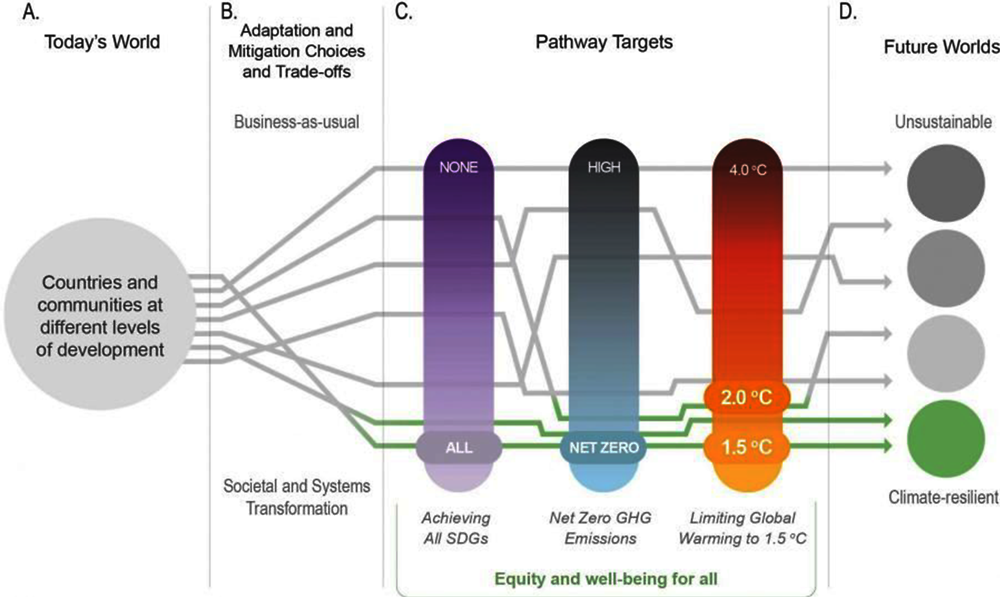I originally wrote this article for the Center for Sustainable and Development Studies Blog Series.
The past month, the recent COP24 held in Katowice Poland occupied headlines of news articles and has been the subject of tweets and posts on different social media platforms. The important gathering where governments discussed and agreed on how emissions-cutting efforts will be measured, reported and verified, to ensure all countries are held to proper standards, ensured the resilience of the Paris Agreement (you can read the outcomes of the conference here). Meanwhile, above all the kerfuffle, what captured my attention is the viral speech of 15-year old Greta Thunberg, as she speaks in-behalf of climate justice calling for climate action. Inspired by Greta, this blog explores the terms of “what to do” to address climate change and threats to sustainable development now and in the future by discussing climate-resilient pathways.
What are climate-resilient pathways?
The Intergovernmental Panel on Climate Change (IPCC, 2018) defined climate-resilient pathways as development trajectories that combine adaptation and mitigation with effective institutions to realize the goal of sustainable development. These pathways represent evolving iterative processes for managing change within complex socio-ecological systems; taking vital steps and building capacity to increase available options for vulnerability reduction and coping with unexpected threats; monitoring the effectiveness of vulnerability reduction efforts; and, improving risk reduction responses on the basis of continuous learning.

Source: IPCC, 2018[12].Global warming of 1.5°C
Illustrated in this figure in green arrows, Climate-resilient development pathways involve societal transformation rather than business-as-usual approaches, and all pathways involve different adaptation and mitigation choices and trade-offs. Pathways entail a mix of measures, and some simultaneously achieve sustainable development objectives by lowering emissions and reducing the impacts of climate change, while contributing to poverty eradication and reducing inequalities.
Ambitious actions already underway around the world can offer insights into climate-resilient development pathways for limiting warming to 1.5°C. Drawdown, a product of the growing coalition of prominent researchers, economists, climatologists, NGO activists, and other experts, mapped, measured, modeled, and described the most substantive solutions to global warming. Examples of these solutions are strategies such as conservation agriculture which focuses on minimizing soil disturbance, maintaining soil covers, and managing crop rotation (implementation costs of said strategy are at $38 billion). According to Drawdown, this could offer significant interim benefits by reducing carbon dioxide emissions by 17.4 gigatons based on average carbon sequestration rates of .15 to .25 tons of carbon per acre per year, depending on region making a return of $2.1 trillion. In another instance, if 50 percent of food waste is reduced by 2050, avoided emissions could be equal to 26.2 gigatons of carbon dioxide.
Other examples teach us about different ways to promote development through practices rooted in community values and principles. The Transition movement, with origins in the United Kingdom, promotes inclusive, equitable and resilient communities by respecting resource limits, creating resilience and citizen science. (Read transition stories here). However, while technologies and solutions are available, the challenge for climate-resilient pathways obviously lies on identifying and implementing mixes of technological and governance options that reduce net carbon emissions while supporting sustainable economic and social growth. Meanwhile, the examples (e.g. Transition movement) indicate that pathways that reduce poverty and inequalities are possible and provide guidance on pathways towards socially desirable, equitable and low-carbon futures supporting the idea that confronting climate change can also be, inspiring, fun, inclusive and a task that everyone may find themselves engaging.
Clearly, the link between the SDGs and the fight against climate change are cross-cutting and complex. Unless climate-resilient development pathways are pursued, the achievement of the SDGs will be more difficult. Which pathways are possible and most desirable will differ between and within regions and nations as development progress is uneven and climate-related risks are unequally distributed. Moreover, we have to ensure that such pathways are inclusive, fair, and equitable, to avoid poor and disadvantaged populations being worse-off. For that, flexible governance would be needed. Where we are with flexible governance, however, may be demonstrated by the fuel protests in France, the #FridaysforFuture strike movement by Greta, and any other climate movement around the world. This demonstrates the implications of how development pathways should be processes of deliberation and realization that address local priorities, societal values, and inevitable trade-offs. Even if we all acknowledge the need to reduce greenhouse-gas emissions, not taking this into consideration would not resolve the plight of the lower-middle and working classes who can hardly make ends meet. Climate-resilient development pathways should pay close attention to the politics that shape the sustainability and capabilities of everyday life and elements for community resilience, transformative change, and politics that perpetuate business-as-usual trajectories (IPCC, 2018). Evidently, work still has to be done to close the physics-politics gap.At the end of every day, we have to remind ourselves that climate change affects everyone and that our responsibility to the future generations should extend beyond economics as well as politics, reflecting that its impacts know no political divide. While talking about it may not be easy and comfortable knowing the evidence of high risks with related extremely grave outcomes, what we have to remember is that we can all do something, and even talking about this is one of them.
You can read more community initiatives against climate change here and here.
You can read the chapter on mitigation pathways compatible with 1.5c in the context of sustainable development here.